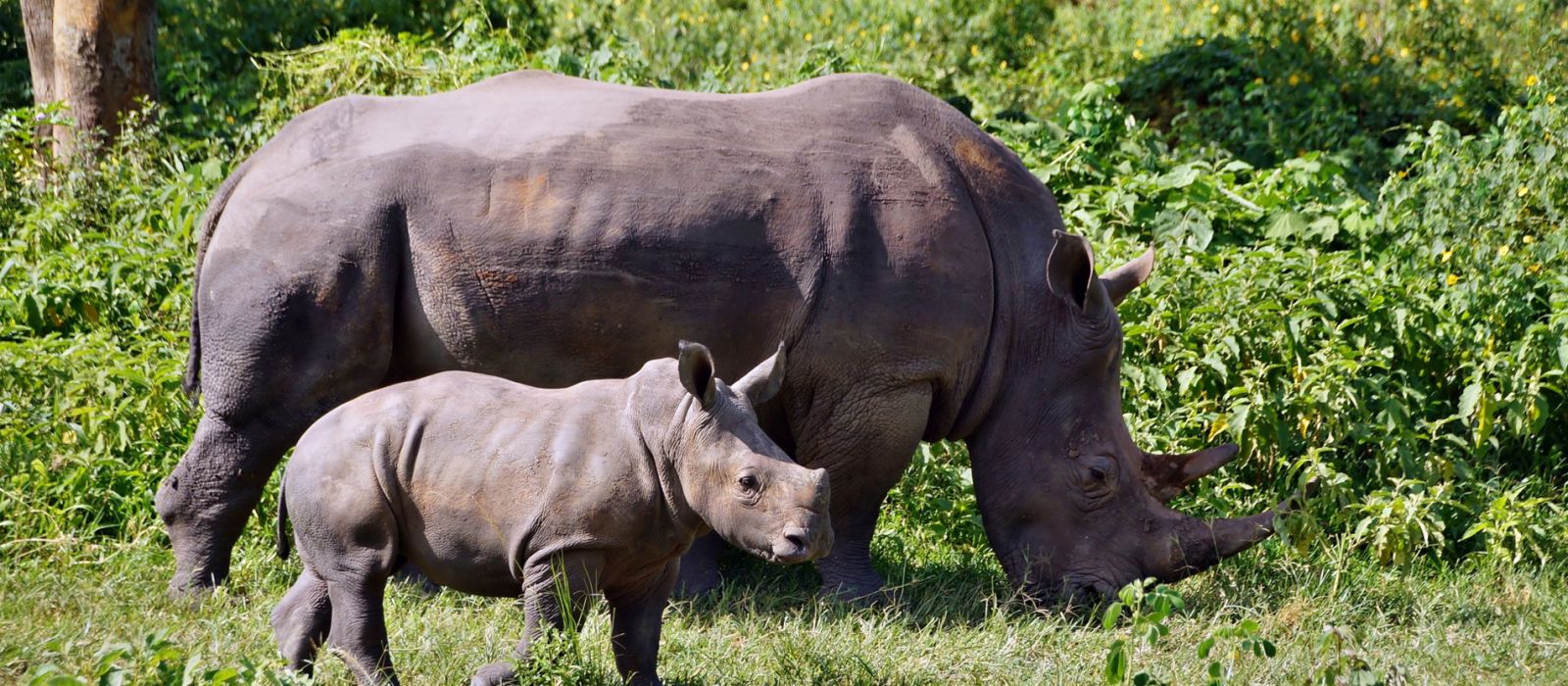Rhinos in Africa exist in two species, the black rhino and the white rhino. White rhinos mainly live in South Africa, but they have also been reintroduced to Botswana, Namibia, Swaziland, and Zimbabwe.
Southern white rhinos have been introduced to Kenya, Uganda, Zambia, and Cote d’Ivoire. The majority of the black rhino population—98%—is concentrated in four countries: South Africa, Namibia, Zimbabwe, and Kenya. South Africa houses 40% of the total black rhino population. There are some black rhinos in the region spread between Cameroon and Kenya.
Knowing about the Rhinos in Africa
The white, or square-lipped, rhino derives its name from the Dutch word “weit,” meaning wide. It is actually grey in colour and has a hump on its neck and a long face.
The black, or hooked-lipped rhino has a thick, hairless grey hide. Both rhinos have two horns.
Rhino behaviour & diet
- Some rhinos are more introverted than others.
Rhinos live in home ranges that can sometimes overlap with each other, and their feeding grounds, wallows, and water holes may be shared. The black rhino is usually solitary, while the white rhino tends to be more social.
- They can’t see very well.
Rhinos have poor eyesight, which may explain why they will sometimes charge for no reason. However, their sense of smell and hearing are very good.
- Rhinos tend to live where they like to eat.
The black rhino is a browser. Its triangular-shaped upper lip, which ends in a grasping point, is used to eat a large variety of vegetation—including leaves; buds; and shoots of plants, bushes, and trees. It can be found in various habitats that have dense, woody vegetation. The white rhino lives in savannas, which have water holes, mud wallows, shade trees, and the grasses they graze on.
Challenges
- Rhinos have become victims of organized crime.
In the wild, the adult black or white rhino has no predators except for humans. Rhinos are hunted and killed for their horns. The major demand for rhino horn is in Asia, where it is used in ornamental carvings and traditional medicine. Rhino horn is touted as a cure for hangovers, cancer, and impotence. Their horns are not true horns; they are actually made of keratin—the same material that makes up our hair and nails. Truly, rhino horn is as effective at curing cancer as chewing on your fingernails.
- Habitat loss is also a major threat to rhinos.
As human populations rise and cities grow, logging, agriculture, roads, and settlements destroy rhino habitats.
Solutions to saving Rhinos in Africa
Our solutions to saving the rhino from extinction:
- Visit, Stay and Volunteer.
Realm Africa Safaris™ is working with various conservation organizations to spread public awareness about the illegal rhino horn trade, the horrors of poaching, and dwindling rhino populations. As part of our contribution to rhino conservation, we encourage our clients to visit and stay overnight at the Zziwa Rhino Sanctuary in Uganda, Ol Pejeta Conservancy In Kenya or Mkomazi Rhino Sanctuary in Tanzania.
Our Popular itineraries designed with the Rhino Conservation in mind


